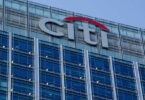There are numerous consortia addressing trade finance, including four which are international. As the first one gets closer to launch (we.trade), the question is whether there’s room for so many. There’s already talk of mergers.
Bain wrote in a recent report about the stampede into transactional banking. They note that traditional corporate lending is experiencing tightening margins and higher capital requirements, whereas transactional banking including trade finance offers less volatile revenue.
The report warns about the attractiveness of the segment. It says: “The widespread optimism may not be warranted, however. For one thing, banks are chasing the same, albeit growing, market.” The number of blockchain initiatives in the trade finance space is an excellent example of this.
The four consortia – we.trade, Marco Polo, Voltron, and Batavia – are described in a separate article.
Beyond merging and interoperating there’s a third option for the alliances. That’s to compete against each other. For now, three of the four consortia have different market positioning.
Mergers?
In the enterprise blockchain community there’s much talk about consortia merging, but so far there’s no evidence of that happening. This chatter is not industry specific.
If you analyze the four trade finance consortia, three of them have very particular market positioning. we.trade for SMEs offering open account, Marco Polo perhaps larger companies offers open account, Voltron offers letters of credit. The odd one out is Batavia which appears to be far broader and overlaps with them all.
There are rumors about Batavia. In March Roberto Mancone, COO of we.trade was at the IBM Think 2018 conference. He was asked: “There’s been some talk that maybe something’s happening between you. Are you talking to Batavia?”
Mancone replied: “The diplomatic answer is I cannot deny, I cannot confirm. The truth is very obvious, then I will let you think about it. Obviously yes we are working on Hyperledger, we are working with you (IBM) on the development of the platform.”
He continued: “Batavia which is another consortium of banks, also is working on Hyperledger, with IBM on the development of a similar platform. If you ask me do you see synergies between the two? Obviously. Is it going to happen. Obviously. When? I cannot say right. But I think I said enough.”
Batavia isn’t yet ready to launch. There’s a big difference between a merger pre-launch and a merger after a platform is live.
Interoperability
Marco Polo and we.trade are fundamentally different in architecture from both a business and technical perspective. Even if they were using the same technology (they aren’t), there is no natural way to link them.
Some of these networks are on Hyplerledger Fabric, and others are on R3’s Corda. Groups are working on integrating the two technologies, and Ledger Insights has come across some solutions though they’re not very elegant.
Beyond the four major international consortia, there are also other supply chain projects with which these initiatives will need to work. For example, the Maersk/IBM project and the Hong Kong Monetary Authority Trade Finance Platform.
HSBC’s view
Ledger Insights talked about interoperability with Joshua Kroeker who heads up Blockchain and DLT for trade finance at HSBC. He said “it’s obviously important that as there’s going to be multiple networks that we’re looking to get to work together. I think it’s more about being a bridge than combining networks. Participating in multiple networks could be a way to be interoperable.”
He’s not the only one that thinks that way, as multiple banks belong to more than one consortium.
A key point Kroeker made is it’s one thing if a system is designed from the start to be interoperable, but to take two existing networks and to try to plug them together is something else. So if they’re going to merge, the sooner, the better.
In the meantime, integrations may fall back to the old-fashioned way: using APIs. This combined with participating in multiple consortia are pragmatic solutions, but they don’t address the data siloing issues which distributed networks are meant to solve.
The HSBC executive pointed out it’s not just a matter of technology. Every network has its own rules and governance. If data passes from one system to another, there are permission and governance issues associated with that. That’s a much trickier issue to address.
CryptoBLK view
CryptoBLK is working with HSBC on Voltron and on R3’s Bolero bill of lading system. In addition, they’re developing an open account trade finance project on Corda with Novamondo. CEO and founder Duncan Wong started the company partly out of frustration with the lack of production-ready platforms.
As a technology provider working with different blockchains and ledgers, he doesn’t see the interoperability issue as a technical one. He’s comfortable transferring data from one ledger type to another and agrees that governance is a big issue.
Wong believes that all the consortia ultimately have common objectives but different models. So common standards are important, and Wong thinks any standard development will be market and consortia driven.
“Right now we are trying to be very transparent. We are actually working on a white paper together with R3 and HSBC and some other banks as well,” said Wong. “We hope that we can come up with some de facto standard to connect the systems.”
TradeIX view
Oliver Belin is CMO at TradeIX which is part of the Marco Polo consortium. He said they have active discussions between the different R3 consortia. “While over the past years, several new trade finance initiatives and networks have emerged, they are all facing the challenge of how to establish seamless communication with each other.”
“If each initiative builds its own network and can’t connect to one another, the industry will be left with the very same problem the industry is spending a lot of time and money to solve, the elimination of digital islands with the creation of true industry interoperability.”
In related news, TradeIX announced a $16m funding round led by ING.
Conclusion
So for now, it looks like there’s a possibility Batavia could be one of the first blockchain consortia to merge.
The question is whether all three of the others will launch. Given the initial lack of target market crossover, they won’t compete with each other for a year or two.
With we.trade readying for production it looks like interoperability is a task to be tackled sooner rather than later.






